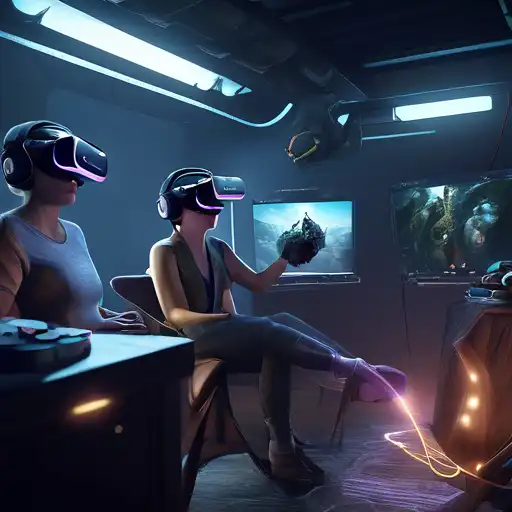Introduction to Virtual Reality
Virtual Reality (VR) has transformed the way we interact with digital content, offering unparalleled immersive experiences. From gaming to education, VR's applications are vast and varied. This guide will walk you through the essentials of creating captivating VR experiences that engage and astonish users.
Understanding the Basics of VR
Before diving into creation, it's crucial to grasp the fundamentals of VR technology. VR creates a simulated environment that users can interact with in a seemingly real or physical way. This is achieved through specialized hardware like headsets and controllers, combined with sophisticated software.
Designing for Immersion
Immersion is the cornerstone of any successful VR experience. To achieve this, designers must focus on creating a believable world. This involves detailed environments, realistic physics, and interactive elements that respond to user actions. Remember, the goal is to make users forget they're in a virtual space.
Key Elements of Immersive Design
- High-quality graphics and textures
- Realistic sound design
- Interactive objects and environments
- Smooth and intuitive user controls
Choosing the Right Tools
Selecting the appropriate software and hardware is pivotal in VR development. Popular game engines like Unity and Unreal Engine offer robust tools for creating VR content. Additionally, consider the target platform's hardware specifications to ensure compatibility and performance.
Testing and Iteration
Testing is a critical phase in VR development. Gather feedback from users to identify areas for improvement. Pay special attention to motion sickness, a common issue in VR, and adjust your design accordingly. Iteration based on user feedback is key to refining the experience.
Optimizing for Performance
VR applications demand high performance to maintain immersion. Optimize your project by reducing polygon counts, compressing textures, and implementing efficient coding practices. This ensures smooth gameplay across a range of devices.
Publishing and Marketing Your VR Experience
Once your VR experience is polished, it's time to share it with the world. Choose the right platforms for distribution, such as SteamVR or Oculus Store. Effective marketing strategies, including social media promotion and demo releases, can help attract users.
Conclusion
Creating immersive VR experiences is a challenging yet rewarding endeavor. By focusing on immersion, selecting the right tools, and iterating based on feedback, you can craft unforgettable virtual worlds. As VR technology evolves, so too will the possibilities for creators. Stay curious, keep learning, and push the boundaries of what's possible in virtual reality.
